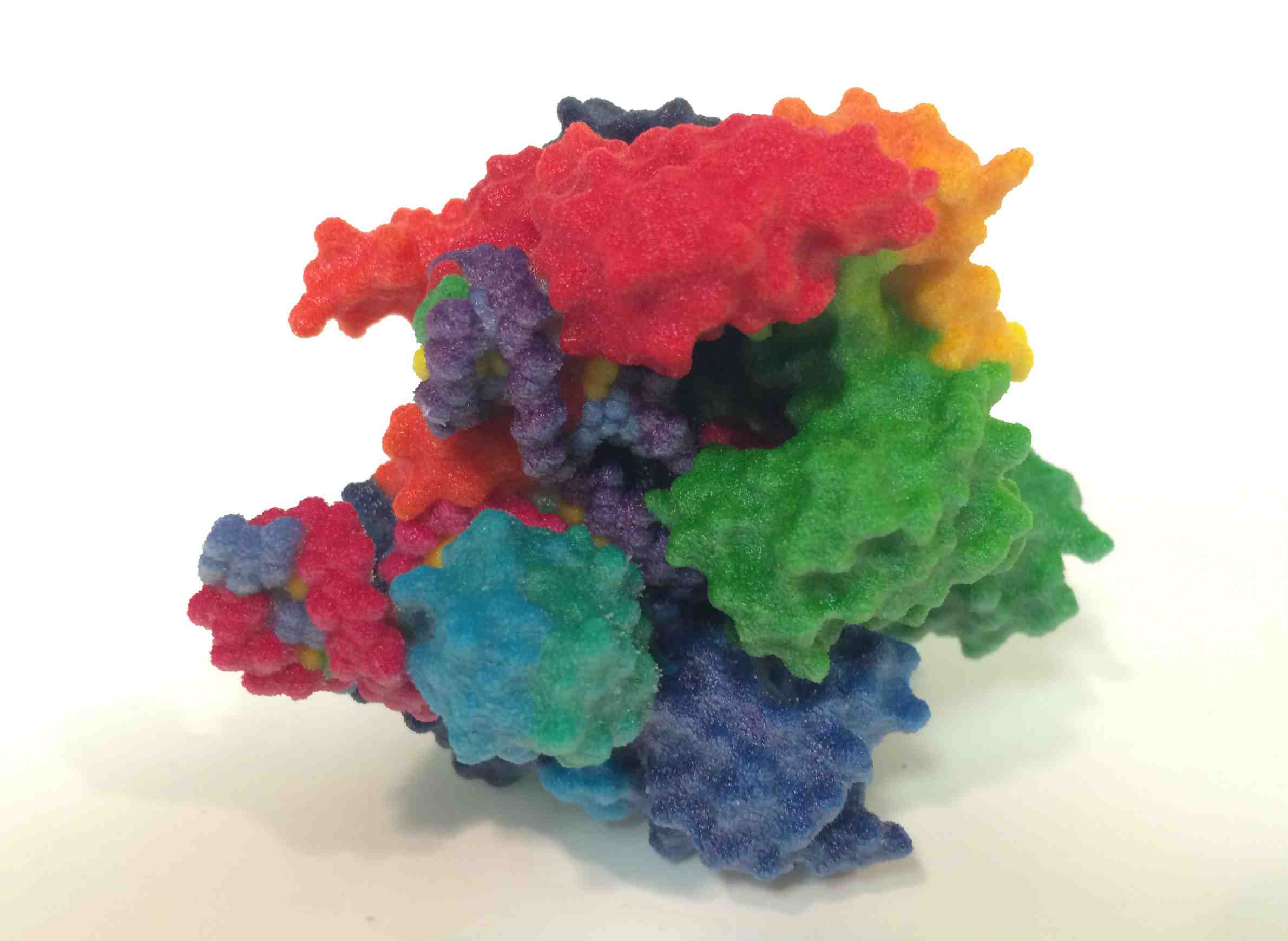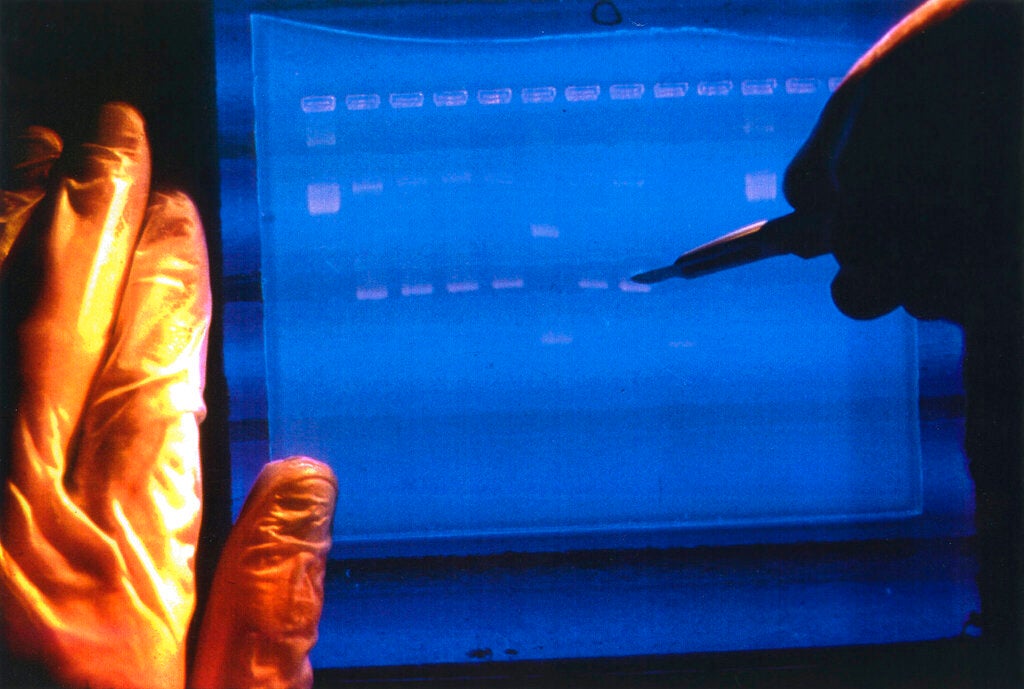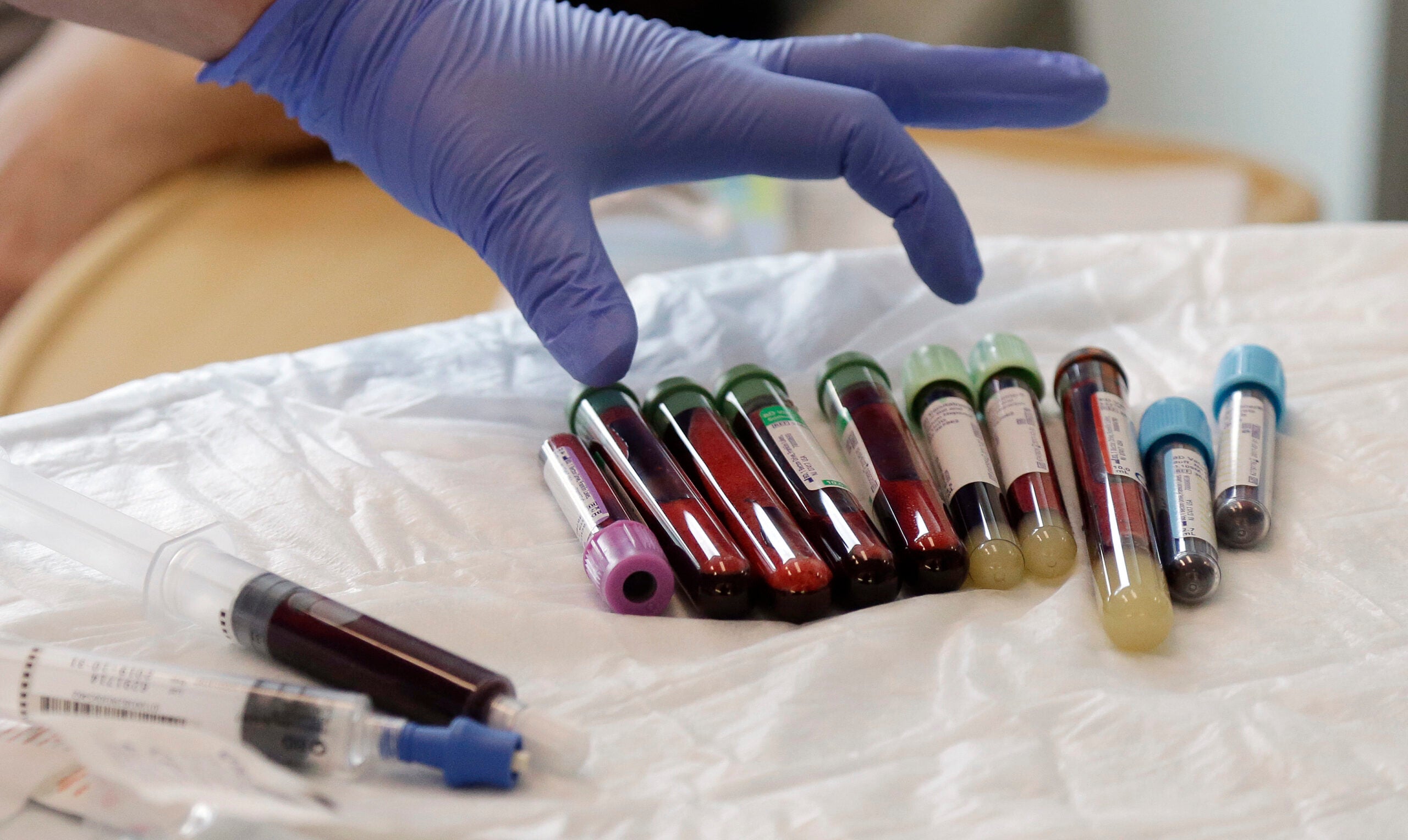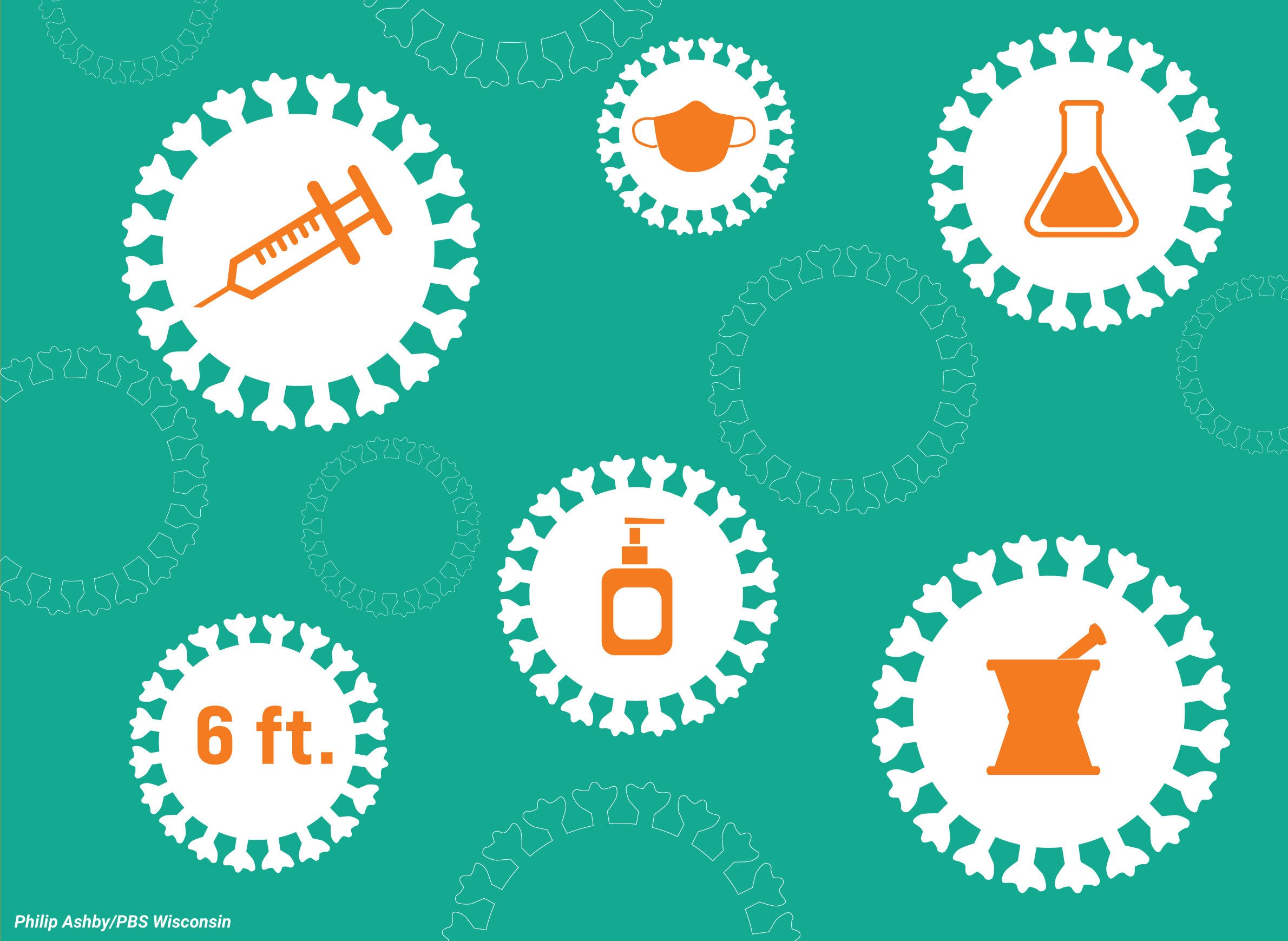“Clustered Regularly Interspaced Short Palindromic Repeats.” While this six-word phrase is a mouthful, the genome-editing technology called CRISPR has entered the pop-science lexicon, pushing the line between science fiction and reality from its initial discovery in 1987 to breakthroughs in the 2010s.
Despite sensational headlines and even DIY home CRISPR kits, misunderstandings, practical limitations and ethical concerns surround the practice of gene editing. But many in the scientific community are optimistic about the technology’s potential to improve food production, fight disease or resurrect extinct species.
Stay informed on the latest news
Sign up for WPR’s email newsletter.
Kate O’Connor-Giles, a genetics professor at the University of Wisconsin-Madison, discussed the potential and pitfalls of CRISPR in an April 27, 2016 presentation. Delivered at the Wednesday Nite @ the Lab lecture series on the University of Wisconsin-Madison campus, it was recorded for Wisconsin Public Television’s “University Place.”
“CRISPR really is an incredibly valuable tool to us in the lab,” O’Connor-Giles said. “[It] has changed not just the way we do things, but the things we can think about doing.”
The actual process of gene editing can be difficult to grasp; O’Connor-Giles likened it to using the find and replace function when editing a document in a text editor program. In applying CRISPR, genome engineers create breaks in sections of sequenced DNA using the Cas9 protein to commandeer a cell’s normal repair pathways and replace a section of the original DNA with an edited version that, ideally, produces desired changes in an organism.
The dairy state played a role in advancing CRISPR technology. In an effort to protect yogurt and cheese cultures from contamination, researchers at a Madison dairy company sequenced bacteria that proved able to withstand viral infections and identified the CRISPR sequences associated with those viruses. This process enhanced the understanding of how bacteria naturally self-edit to develop a resistance to virus DNA.
“They showed … that you could use this in a test tube,” O’Connor-Giles said. “If you put in the protein and the RNA, the Cas9 protein and the guiding RNA, you could cut DNA at will. So, you could program it to cut DNA at specific sequences.”
While most research has focused on making changes in common research organisms like fruit flies, scientists in China have experimented with CRISPR editing of nonviable human embryos to change the gene mutation associated with the blood disorder beta thalassemia. Of the 86 embryos used in the experiment, 54 could be edited. Only 17 embryos showed any signs of responding to the editing process, and just four out of the original 86 saw the repair occur correctly.
The rapid development of CRISPR has raised many scientific and ethical questions, but as of 2018, the technology hasn’t developed to allow users to make radical changes in human biology or create a real-life “Jurassic Park” populated with extinct species. Yet.
Key facts
- Like many emerging technologies, the scientific discoveries that underpin CRISPR involved multiple research teams, dozens of scientists and decades of work, leading to patent disputes and a race to secure rights to the technology. The competition was driven by efforts to attract funding from venture capitalists and garner recognition for past and future breakthroughs.
- The breaks in DNA used by CRISPR technology can also occur naturally due to exposure to radiation like UV light or X-rays. Cells have a method of self-repair that knits the broken ends of the double-stranded DNA back together. This process is imperfect, and if a portion of the genomic information is lost, the broken end of the DNA strand may replicate a copy from elsewhere in the genome. This natural mechanism is also how CRISPR edits can be inserted into a genome and duplicated in DNA.
- While the CRISPR editing process can be likened to making changes in a document, cells often respond in a way that is similar to a cellphone’s auto-correct feature. A researcher may attempt to introduce changes, but the cell responds by supplying the original, undesired information instead of the edited sequence.
- CRISPR-adapted yogurt and cheese developed by one of the organizations that contributed to the technology is already sold in stores, and the U.S. Department of Agriculture has concluded that CRISPR-edited crops are not genetically modified because the process does not introduce foreign DNA to the plants’ genomes. This decision means CRISPR editing falls outside of the USDA’s regulatory authority, speeding the rate at which edited crops could reach consumers.
- Following the 2015 outbreak of the mosquito-borne Zika virus, researchers began to consider gene editing to combat the disease, which can cause a range of symptoms in those infected, and microcephaly in infants whose mothers contracted it during pregnancy. Possible approaches include developing tools to detect the virus using CRISPR technology, or even directly editing mosquito species that carry the disease. The latter approach carries major implications, as the edits would likely introduce a new gene drive to the insects’ genome that would introduce changes to the edited mosquitoes and all their offspring, spreading through their population and potentially yielding unforeseen consequences in the broader ecosystem.
Key quotes
- On the promises of CRISPR: “It has been a longstanding goal of biologists to be able to do exactly this. To erase and rewrite a genomic sequence.”
- On using CRISPR to change organisms: “This is a way to modify the genomes of both plants and animals and livestock in a way that doesn’t involve bringing in foreign DNA. So this may be a potential way to improve our ability to feed the world.”
- On the history of gene editing: “We have many, many, many organisms’ genome sequenced. You need the genome sequence, but you need more; you need a molecule that you can target to that sequence. There were proteins that did this job. These proteins have actually been around for a couple decades, so CRISPR is not something that’s completely new in the sense that it allows us to do something we couldn’t do before. What is new is that… it makes it feasible. It makes it reasonable to do it in a timely and an efficient manner.”
- On the low cost of applying CRISPR technology: “This will cost you 20 bucks and take you a day. And really a couple hours’ worth of work over that time. So, this is really easy molecular biology for any lab.”
- On gene-editing patent disputes: “There are some major patent wars going on … the clinical applications certainly … agricultural and many others have a great potential to make a lot of money. This patent is important, but the groups involved … have been extremely open and generous in sharing with researchers, and that’s a major reason why this technology has spread so far and wide in labs… . It actually has been a remarkably open process that’s evolved incredibly rapidly with lots of people sharing unpublished information to help pass on this really important lab technology for nonprofit research labs.”
- On the difference between genetically editing flies and humans: “Under conditions where we can select for the events that occurred the way we wanted, this is paradigm shifting… We can make any fly we want to make now. We’ve got a little machine; we put in a wild type fly, and out comes the fly we want. It’s fabulous. We really have high efficiency, high success rate, but we can toss the flies that aren’t what we want. So that’s a very, very, very different situation than a clinical setting.”
The Revolutionary Ambitions Of Gene Editing And Its Expanding Application was originally published on WisContext which produced the article in a partnership between Wisconsin Public Radio, Wisconsin Public Television and Cooperative Extension.
This report was produced in a partnership between Wisconsin Public Radio, PBS Wisconsin and the University of Wisconsin Cooperative Extension. @ Copyright 2024, Board of Regents of the University of Wisconsin System and Wisconsin Educational Communications Board.






